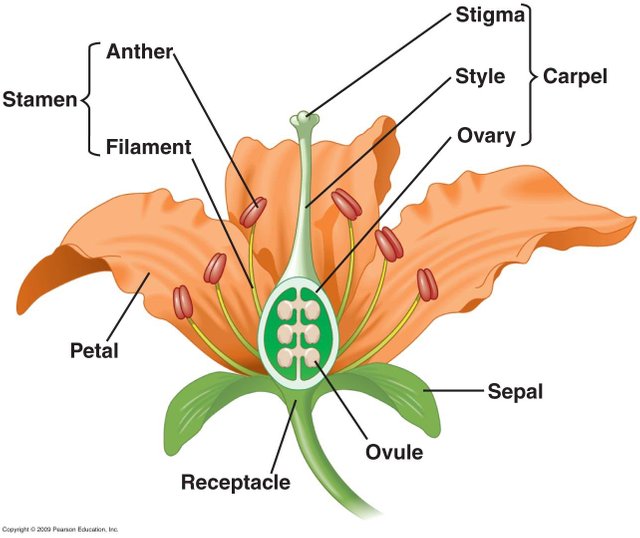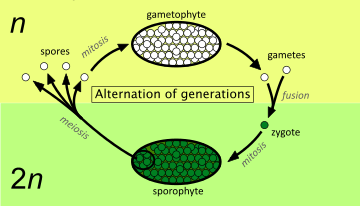what is the basis for reorganization of the angiosperms plant
 The angiosperms
The angiosperms
The term angiosperm used for “enclosed seeded” plants.Angio means closed and sperm means seed.
Angiospermic plant body
They are higher plants because of true root, stem, branches, flower, reproductive organs and complex vascular system.The vegetative organs are involved in the absorption of water and minerals, manufacture of food, its utilization for growth and development.In some reproduction.Flowers are reproductive organs which vary in size, form and color from species to species.
The sporophyte
The angiospermic plant is diploid (2n) and a sporophyte.It is dominant phase of the life cycle.It produce two morphologically and physiologically different kind of spores, the microspores (male-spore) and megaspores (female-spore).Flowes are reproductive organs.
Structure of a typical flower
As we know, each flower consists of four types of floral leaves: the sepals, petals, stamens and carpals, arranged in whorls on receptacle.The sepals and petals collectively known as perianth.
The stamens and carpals are male and female sporophyll respectively.They are highly modified reproductive floral leaves in which spores are produced.
Microsporophyll(stamens)
It consists of a stalk.the filament,and a bilobed structure at its tip, known as anther.The anther lobes are connected with a tissue, the connective.Two microsporangia are present in each anther in which microspores produced.It is surrounded by many-layered sporangium wall that surround the sporogenous cells. The innermost layer which is nutritive in nature and known as taptum.The cell divide to form microspore mother sells which undergo meiosis to produce tetrads of microspores The microspores germinate to form male gametophyte.
Microspore
Each microspore is unicellular, uninucleate structure possessing two layered wall.The outer layer is thick and called as exine and inner is thin and known as intine.Germ pores are present in the thin places of exine layer.The exine provided with spinous outgrowth or reticulation in some cases.
Megasporophyll(carpel)
Each megasporophyll or carpel has a basal swollen part, the ovary; a stalk is present at the top of the ovary, the style and stigma,the different modified tip of the style.The stigma is the receptive portion which receive pollen grains.
Ovule
The ovary has one or more rounded or oval bodies, which are called ovules.The ovules are produced on the walls of ovary by special tissue, the placentae.
Each ovule is attached to the placenta by a short stalk, the funicle.The hilum is the place of attachment of the funicle to the main body of the ovule.The main body consists of sporogenous tissue, the nucellus, covered by two protective layers the integuments. The integuments do not surround the whole nucellus.A small opening is present at the top.The junction of the nucellus and integument is known as chalaza.
A nucellus cell enlarges in size and actsas megaspore mother cell.It divides meiotically to produce linear tetrad of megaspores. The upper three spores disintegrate and the remaining one enlargeto form embryo sac.
The Gametophyte
The gametophyte phase is haploid much reduced and dependent upon sporophyte.The microspores and megaspores develop into male and female gametophyte respectively.
Male Gametophyte
The first cell of the male gametophyte is microspore.It is represented by pollen grains which is semi germinated male gametophyte and pollen tube with two sperms nuclei and a tube nucleus.
The germination of the microspore starts while it is still in the microsporangium. The nucleus divides to form a generative and a vegetative nucleus.The intine grow up through germ pore to form pollen tube.At semi-germinated condition the microspore now called pollen grain.The pollen grains carried to the stigma of the carpel by wind, animals, water and insects.The transfer of pollen grains from anther to stigma is called pollination.Then the pollen grains germinates here completely.The generative nucleus divides into two to form sperm nuclei and the pollen tube which carry the sperm to the egg cell.
Female Gametophyte

The microspore is the first cell of female gametophyte. It consists of eight-nucleate embryo sac.A typical embryo sac contains an egg apparatus comprising of an egg cell and teo synergidsor at the micropyler end. Three antipodal cells at the chalazal and a diploid secondary nucleus in the center.
Double Fertilization
In angiospermic plants a unique fertilization is present.It is double fertilization.One of the two sperm nuclei fuses with egg cell to form zygote nucleus which develops into embryo.Then the other fuses tio form nutritive tissues, the endosperm.The egg secrete a thick wall around it to form a oospore which is the firwst cell of the sporophyte.
The embryo
The embryo in dicots is octant type while in monocots the embryo is filamentous type.
The endosperm
The endosperm which supply the food to the developing embryo. The surplus food is stored in the seeds.such as in pea, bean and gram. Tese seeds are known as endospermic seeds.Sometimes the endosperm is completely used by developing embryo are known as non-endospermis seeds.
The seed
The ripened ovule is called seed.Some seeds are dicot(2cotyledons) and somes are monocot(1 cotyledon)
The Fruit
The ripened ovary is known as fruit.In angiospermic plants the seeds are enclosed in the fruits.The seed germinates when conditions become favourable.
Alternation of Generation
There are two type of generations sporophyte and gametophyte are present in the life cycle of angiosperm plants which alternate with each other in regular sequence.The reduction division is occurs during the formation of spore which is restored at the time of formation of zygote.